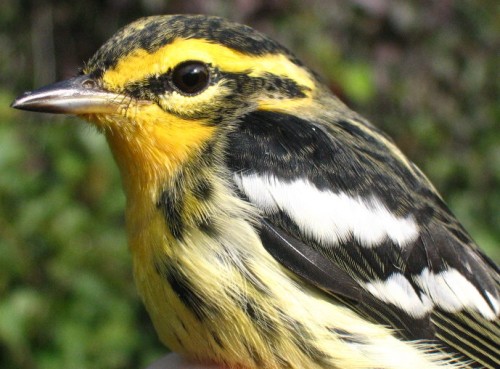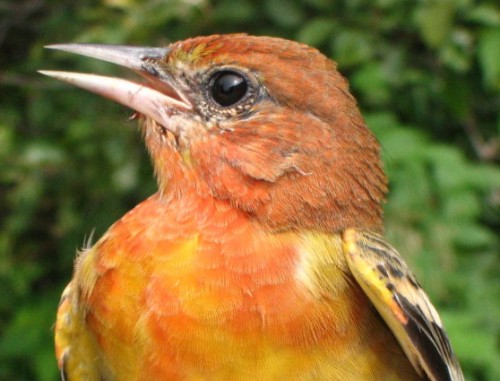|
McGILL BIRD OBSERVATORY |
||||||||||||||||||||||||||||||||||||||||||||||||||||||||||||||||||||||
Welcome
to the McGill Bird Observatory weekly report.
Click here for a complete listing of our archives.
Bander-in-charge:
Seabrooke Leckie Notes: The first day of week three set the general tone for the rest of the week. Warmer morning temperatures and west winds overnight didn't bring in many new birds, and only 13 individuals were banded. However, a small flock of warblers spotted on census included a new bird for the season, Northern Parula. A Broad-winged Hawk was the first of a few to be spotted over a few days at the beginning of the week, cruising lazily high above the site. Wednesday was a bit of a surprise for the staff who were present. With identical conditions to Tuesday, we were expecting a slow morning, but were in fact kept quite busy with a total of 54 birds captured. Just goes to show, you never know what tomorrow will bring! A strong movement of warblers was recorded, both banded and observed, and a large group of Baltimore Orioles was also banded, the two species groups accounting for 37 of the birds captured. We were pleased to discover a second (or possibly the same) Sedge Wren on opening round along the main path; he perched and sang for a short period, but disappeared after that and wasn't seen again all morning. Things became quiet again on the 17th and persisted through to the 20th. An average of just under 14 birds per day were banded over this period. A Great Crested Flycatcher was banded on the 18th, but there were generally few banding highlights. A group of five Green Herons flew over the site together on the 17th, and we were lucky enough to watch a Cooper's Hawk chase a Pileated Woodpecker from the dead tree on the 19th. A Whip-poor-will was spotted on the 20th sitting on the main Arboretum road on the way in to the site in the morning. A few warblers and flycatchers continued to move through over the four days, but in small numbers. Activity picked up for the last day of the week, with 40 birds captured. North winds and patches of rain overnight probably contributed to the increased numbers. Our highest species count of the week was recorded this day, with a total of 53 observed or banded, including 15 species of warblers (our greatest single-day diversity so far this season). MBO's third, fourth and fifth Blackburnian Warblers were captured, and a Yellow Palm Warbler, new for the season, was spotted on census. A Red-shouldered Hawk was discovered in a net near the end of the morning, but just managed to escape before staff could reach him. Too bad, it would've been a good end to a good day! As we round the corner into the end of August, we can expect warbler diversity to remain high and anticipate busier days throughout the next few weeks. It should be an exciting period, with lots of surprises in store!
The lists show some interesting changes beginning to occur. While Song Sparrow and Baltimore Oriole remained the most frequently banded birds for a second week in a row, Rose-breasted Grosbeaks have already dropped off considerably, and the first wave of (we presume, given last year's results) many Magnolia and Nashville Warblers arrived. The biggest changes among species observed were the virtual disappearance of Red-winged Blackbirds, and sudden increase in Bobolinks, which landed them among the most numerous birds of the week, a first for MBO. This addition will certainly delight one of our banders-in-charge, Barbara Frei, who studies these little guys. We’re sure she’ll be sitting by the fence bordering the east side, scanning the corn field for BOBOs.
|



